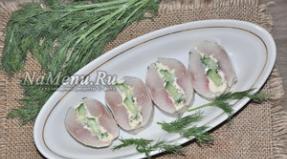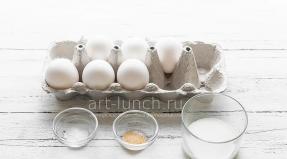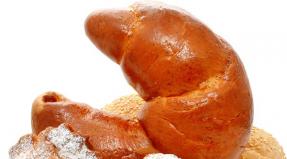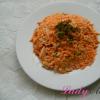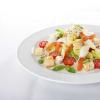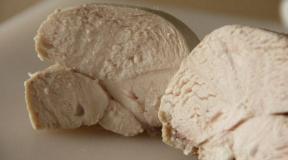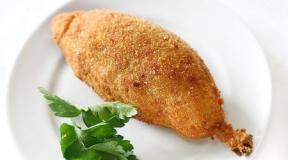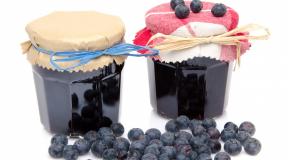White and brown sugar: is there a difference? Sugar: white death or brown life? Which sugar is better - brown, white or maybe yellow.
White sugar has always been called the white death, and brown sugar has been hailed as healthy. Is there really a difference between them?
Brown sugar was "discovered" in ancient India more than two thousand years ago, accidentally discovering that the juice of one of the wildly growing canes is sweet. People considered it a gift of the gods, there is even a mention of it in the ancient Indian text of the Ramayana.
White sugar was given to the whole world by Napoleon. He was needed as one of the symbols of French independence. At that time, the "sugar business" was a British monopoly because India was its colony. Prices for sugar were even higher than for spices.
The poor could only eat the remains of sugar syrup, which was brought for processing - they scraped it from the bottom of the ships. Napoleon was irritated by this state of affairs. And he found a way out.
Before the emperor, no one believed in the ideas of the German scientist Andreas Markgraf. Meanwhile, he discovered a plant that can grow in temperate countries and does not require much investment - beets. Napoleon appreciated the idea and built beet factories throughout the country.
What kind of sugar was eaten in Russia 200 years ago
Until the 19th century, there was "imported" cane sugar in Russia. It appeared in the 12th century and, as in France, was on the tables only among the wealthy segments of the population. In the 17th century, Peter I even founded a "sugar department" - a sugar chamber. But everyone in Russia could afford to drink tea with sugar only since 1802 - it was then that the first sugar beet factory started operating.
as advertised
Russian entrepreneurs promoted the newly appeared white sugar as best they could. They did not pack it in the same way as today, but in the form of a “sugar head” - it is easy to imagine by analogy with a “cheese head”, the weight reached 15 kg. These giant "heads" were placed in the decorations in store windows to attract the attention of buyers. One such head was even exhibited at the 1870 Manufactory Exhibition in St. Petersburg.
In contrast, European businessmen have created a whole cult around brown sugar. They launched a whole line of accessories: sugar bowls, tongs, dainty stirring spoons. All this was considered a luxury, attributes of a beautiful life.
Source: Pixabay/CC 0
Is there a difference in composition
Cane sugar is not refined. It itself has a pleasant taste and caramel smell.
Beet must be refined, because without processing, both taste and smell are repulsive.
The main difference between cane sugar and white sugar is that it retains fiber, since it is not refined.
In addition, trace elements are preserved in cane sugar. According to the US National Food Database (it stores data on the composition and energy value of almost all existing products), cane sugar contains more potassium, calcium, iron, magnesium, and phosphorus. That is more minerals. It also contains vitamins.
Which sugar is sweeter
How white and brown sugar affect the body
Do not be fooled by the fact that fiber, minerals and vitamins are preserved in cane sugar. There aren't too many of them out there to make brown sugar harmless and healthy.
The World Health Organization recommends less than 5% of calories consumed from sugar. This is equivalent to about 25 grams (about 6 teaspoons) of sugar per day for an adult with a normal body mass index.
That is, 5% is generally all the sugar that we eat: not only sweets, but also fruits, juices. Sugar is often hidden hidden in prepared foods, such as ketchup and even bread.
With such a small allowable amount of sugar, as recommended by the WHO, the presence of minerals and fiber in brown sugar will not play any role, it is much better to get it from vegetables.
Brown and white sugar are equal in amount of sucrose. This means that they equally "kill" the pancreas.
Why is brown sugar so expensive?
Its price in Russia is due to the fact that we simply do not grow cane. The price tag directly depends on transportation costs. But we also have such an interesting phenomenon as brown sugar PR. It is presented as a kind of "curiosity" - supposedly it is so expensive because it is very rare in the world and it is mined manually.
In fact, the volume of production of white and brown sugar is almost the same. 60% of sugar in the world is cane, 40% is beet. Cane is obtained mainly in Brazil, India, Thailand, China. White - in the USA, Russia, the EU.
In some countries, cane sugar is actually "mined" by hand - with the help of machete knives. But this does not affect the prices of the final product: "live" labor is used because labor is cheap in these countries, and it is easier for businesses to pay for the work of people than for the maintenance of factories.
Brown Sugar - Not Always Cane Sugar
Often in stores under the guise of "the same" unrefined cane sugar, white refined sugar, colored with molasses or refined cane sugar, is sold. Therefore, on the package, you must definitely look for “unrefined cane sugar”, and not just “brown”, “dark”, and so on.
Results
For the body, there is no difference between cane and white sugar. Both the one and the other have a bad effect on the pancreas, because they make it secrete a lot of the hormone insulin to process the "sweet". Consumption of any sugar in amounts greater than what doctors recommend can result in metabolic disorders and diabetes.
Alas, we are earthly people, and we are unlikely to be able to cope with our “voluptuousness”. Whoever eats sugar will still do it. White or brown is a matter of taste and money. And if you suddenly want to give up sugar, then here is an instruction based on personal experience.
Brown sugar has long been in high demand among health conscious people. What is the secret of this product, how does it differ from the usual white sugar, and what benefits does its use promise for the body? Let's figure it out.
Brown sugar - what is it?
Brown sugar is a product of sugar cane processing, which retains the color and taste of molasses included in cane juice. A distinctive feature of brown sugar is that it does not go through the bleaching stage during the production process.
A bit of history
In ancient times, brown sugar crystals extracted from cane were the first sugar that people began to enrich their diet with. The first mention of this wonderful plant dates back to the time of Alexander the Great. India is considered to be the birthplace of cane sugar, from which this product spread throughout Europe. In the 16th century brown cane sugar was a symbol of luxury and wealth. This product, which became the cause of wars of conquest, was an integral guest of the royal table. In modern times, brown sugar is not something unusual and outlandish, because everyone can afford to buy it.

White and brown sugar: what's the difference?
Brown sugar has a number of undeniable advantages over its white counterpart. White sugar is a refined product obtained from the chemical processing of brown sugar. To obtain it, various bleaching agents are used, some of which, “settling” in white sugar, penetrate the human body with it. Brown sugar, the recipe for which does not provide for this kind of cleaning, is more natural and environmentally friendly.
The brown color of sugar is associated with the presence in its composition of components such as molasses or molasses, which have a lot of useful minerals. Therefore, brown cane sugar in terms of biological value is largely ahead of white.

Brown sugar: benefits and chemical composition of the product
Cane sugar for 85-98%, depending on the country of origin, consists of sucrose. In addition, the constituent components of this product are a number of trace elements useful for the human body.
So, potassium, which is part of brown sugar, helps cleanse the intestines, removes accumulated toxins, regulates blood pressure and is an active participant in the process of fat and protein metabolism. Without this mineral, normal heart function is impossible.
As you know, calcium, which is also present in unrefined cane sugar, is responsible for the condition of teeth and bones, helps to strengthen them. It is also of great importance for the full functioning of the nervous system and the blood coagulation system.
Zinc is called to normalize fat metabolism. In addition, this mineral, which is an integral component of brown sugar, takes part in the processes of hematopoiesis, promotes the growth of skin and hair cells, and is also necessary for wound healing.

Copper is called upon to improve the activity of the immune system, activate the body's defenses, and magnesium is called upon to speed up the course of metabolism and prevent the process of stone formation. Phosphorus, which is also rich in brown sugar, is necessary for the normal full functioning of the heart muscle and brain. It also participates in metabolic processes, being an integral component of cells and, above all, cell membranes.
Iron, which is also part of cane sugar, is necessary for the functioning of the circulatory system. By the way, in brown sugar, compared to white, purified, the concentration of iron is almost 10 times higher.
Thus, brown sugar, the benefits of which are undeniable, must be included in the diet of every person who is not indifferent to their health.
Scope of application
Cane brown sugar belongs to complex, complex carbohydrates, therefore, the process of its assimilation by the body proceeds at a slow pace. For this reason, such sugar will benefit all those who are struggling with extra pounds. Moreover, according to modern nutritionists, this product can be safely used on salt-free, low-fat, and protein-free diets, but this should be done in moderation. So, without harm to the diet, you can consume about 50 grams per day. brown sugar.
Also, unrefined cane sweetness is widely used for recovery after training, in a healthy diet. Due to the mass of its useful properties and high quality, this product is an indispensable element of baby food, and should also be included in the diet of people prone to allergic reactions.

Brown sugar is used as an additive to hot drinks. So, it will not only add sweetness to tea or coffee, but also give them an incomparable aroma. Cane sugar is also added to canned food, marinades, bakery products, desserts, sweets, ice cream.
calories
Cane brown sugar has about the same calorie content as its counterpart, white beet sugar. If a modest measure of its consumption is not observed, this product can also quickly go into body fat.
So, if the calorie content of 100 gr. white refined sugar is 387 kcal, then unrefined brown sweets - 377 kcal. As you can see, the difference is insignificant. However, if desired, you can find brown cane sugar on sale, the calorie content of which is 200 times less. A similar effect is achieved by adding aspartame, which is an artificial sweetener, to the product.
Beware, fake!
Unfortunately, in modern times, it is highly likely that when buying cane sugar, you will encounter a fake. There are two ways to recognize a low-quality product, but, unfortunately, this can only be done at home.
So, method number 1. To carry it out, you need a bottle of iodine. Brown sugar should be diluted in a glass of water and put a couple of drops of iodine into it. Real brown cane sweetness, reacting with iodine, acquires a blue tint. If this does not happen, then this is not a real product, but a fake.

Method number 2. For the second experiment, as in the first case, it is necessary to dissolve cane sugar in warm water. If it is high-quality sugar, then the water will remain colorless. If you have ordinary caramel on your hands, then the liquid will turn brown.
Among consumers, brown sugar "Mistral" is in special demand. This brand has established itself exclusively on the positive side, since the goods produced under its brand are always distinguished by their high quality.
Alternative to brown sugar
Many people tend to completely eliminate high-calorie sweets from their diet. In this regard, the question of how to replace brown sugar is very relevant. There are several options here.
- fresh sugar cane juice, which contains brown unrefined sugar, however, in an organic, absolutely safe form;
- natural honey;
- vegetables and fruits, which contain a high level of glucose (apples, apricots, bananas);
- dried fruits (raisins, banana chips).

Thus, brown cane sugar is a very useful product, the use of which has a beneficial effect on the work of all organs and systems of the body.
Nutritionists constantly talk about the dangers of refined sugar. At the same time, advocates of healthy eating actively promote the benefits of brown sugar. But after all, both types of loose sweets are a storehouse of pure carbohydrates, and at first glance they differ only in color. So is it worth it to abandon the usual and switch completely to brown sugar, can this product be beneficial or harmful? Few people know for certain about the properties of dark granulated sugar, although it is quite common in stores today.
How is brown sugar different from regular sugar?
There are still plenty of differences between the usual snow-white granulated sugar and its brown counterpart, in addition to color:
- Raw materials and production method: ordinary sugar is produced from sugar beets by evaporation and crystallization, brown sugar is produced from sugar cane by boiling.
- Ingredients: in white there is no molasses, in brown it can be quite a significant part of the bulk of the product.
- Producing country: the usual comes to stores most often from local processing plants, brown is imported from Brazil, Guatemala, Cuba, etc.
- Taste: regular sugar has a neutral rich sweetness, brown sugar can have fruity, caramel and even creamy flavors.
One of the main differences is the price. Ordinary white sugar is three to four times cheaper than brown sugar. Therefore, before choosing a more expensive exotic analogue in the store, you should find out in more detail which sugar is more useful white or brown. Maybe, in terms of useful properties, their difference is not so great, and it’s not worth overpaying just for color?

What is brown sugar good for?
Brown sugar undergoes less processing, so it retains more of the nutrients that were present in the original raw materials. The benefit of brown sugar lies in the fact that it contains many trace elements: potassium, inca, sodium, phosphorus, which are almost absent in ordinary sugar. Cane sweetness may well replace the extremely healthy honey if a person is allergic to it. But in addition to the benefits, brown sugar also has harm. This is a high-calorie product, and it is absorbed very quickly. Therefore, it can provoke obesity with the same degree of probability as the white counterpart. Although there are still a little less calories in one hundred grams - 377 kcal, and in ordinary sugar - 347 kcal.
Many people involuntarily believe that brown sugar is one of the healthiest foods. It is possible that the reason for this is its natural light brown color. Indeed, brown sugar has a color that is closer to natural, but this does not indicate that it is more beneficial than white sugar. The difference between brown and white sugar is expressed in the purification process: the former is not as long as the latter. Thus, brown sugar can be considered as a transitional product, without which the production of white sugar is impossible.
Due to the shorter processing time, sufficient to obtain brown sugar, it retains a greater amount of vitamins and minerals useful for the body. However, in general, this does not make it healthier: their number is so negligible that it does not allow us to consider such sugar a valuable nutritious product.
Brown sugar contains the same amount of calories as traditional white sugar. Even that brown sugar is better for teeth remains a myth: when consumed in excess, it "helps" the development of cavities, just like white sugar.
Distinctive features of the two types of sugar
What characterizes brown sugar? Both white and brown sugar are based on raw sugar. It can be obtained from both sugar cane and sugar beets. At the initial stage of processing, it thickens into a syrup - the so-called molasses, dark brown molasses, is obtained. Commercially available household sugar is obtained by further processing, that is, after decolorization and purification. When brown sugar is obtained, syrup residue remains, giving the sugar a brown color and a slightly malty smell. In terms of their chemical composition, white and brown sugars do not differ from each other.
Brown sugar contains more water due to the low degree of purification. It provides an ideal habitat for microorganisms and becomes unusable faster than refined sugar.
Which sugar is preferred is a matter of taste and appearance.
Brown sugar gives cakes and gingerbread a slightly caramelized flavor and appeal. In addition, when stored in a jar on the kitchen shelf, it looks more beautiful.
In stores, white cane sugar and brown sugar candy or caramel are more common. In its production, sugar cane juice is first filtered, then concentrated, dried and crushed. If the refining process is skipped, more nutrients are retained.
Brown sugar candies are obtained by crystallizing and caramelizing sugar syrup, which turns into a solid mass. Typical lollipops are obtained when the mass is crushed. The candy looks like a clear crystal and is delicious with any kind of tea.
Both brown and white sugar have nothing to do with healthy sweeteners. Therefore, you should not get carried away with them: enjoy sugar in moderation.
Retailers offer two types of products to "sweeten" life - white sugar and brown sugar. At the same time, the price of brown sugar significantly exceeds the cost of white. Let's try to figure out together how brown sugar differs from white sugar and at the same time why brown sugar is more expensive than white.
Which sugar is healthier white or brown?
White sugar is produced from sugar beet or sugar cane and refined.
Beet sugar is sold exclusively in refined form, since unprocessed sugar has a poor aroma and taste.
The brown sugar sold in stores is unrefined cane sugar.
Refining is an industrially implemented process that cleans natural raw materials from impurities. The natural product is divided into constituent substances, some of which goes to waste. But in nature, everything is arranged rationally. Substances that contribute to the absorption of sugar by the cells of the human body are also sent to waste, along with slags.
A person who consumes refined sugar is forced to deplete the internal reserves of chromium. Chromium contributes to the metabolism of glucose and its deficiency in the body can lead to the development of type 2 diabetes. Therefore, it is clear to everyone which sugar is better brown or white.
Brown sugar is no different in calories from white. At the same time, the abuse of both leads to obesity and atherosclerosis.
According to the WHO (World Health Organization), the daily, harmless intake of sugar for a healthy person should not exceed sixty grams for men (about 8 teaspoons) and fifty grams for women. This takes into account not only sugar in spoons and pieces, which is added to coffee or tea.
You also need to count all the sugar that is contained in lemonades, juices, fruits, canned foods, etc. It does not matter the type of sugar consumed - it is important to control its use.
In terms of the amount of nutrients, brown sugar occupies a leading position when compared with white. Unrefined sugar is much higher in B vitamins, zinc, potassium, magnesium, phosphorus and other minerals and vitamins.
In addition, brown sugar has a positive effect on the taste and aroma of hot drinks, highlighting and improving the natural qualities of coffee and tea. Refined affects the aroma and taste of coffee in a neutral way, and changes the quality of tea for the worse.
If you decide to buy the more expensive but healthier brown sugar, be aware that the color of the sugar can also be achieved by coloring. Then it's fake...
The consumer should be offered natural sugar, only brown.
Real unrefined cane sugar owes its color, composition, taste and smell to molasses - sugar syrup.
Types of brown cane sugar
Demerara- refined and unrefined sugar mixed with molasses. The most common on store shelves in our country.
Turbinado- coarse-grained natural sugar, purified with water and steam from excess molasses.
Muscovado- natural sugar produced with different mass fractions of molasses.
The increased amount of molasses further darkens its brown hue.
Black barbados sugar- unrefined unprocessed cane sugar with the largest mass fraction of molasses. Moist to the touch, Barbados sugar has a very dark brown color and a strong natural flavor.

If you want to take care of your family's health, read food labels carefully. Real, healthy brown sugar always contains the inscription "unrefined". Well, its high cost, caused by transportation costs, in this case should fade into the background.
Olga W,
Google
- Dear our readers! Please highlight the found typo and press Ctrl+Enter. Let us know what's wrong.
- Please leave your comment below! We ask you! We need to know your opinion! Thanks! Thank you!
